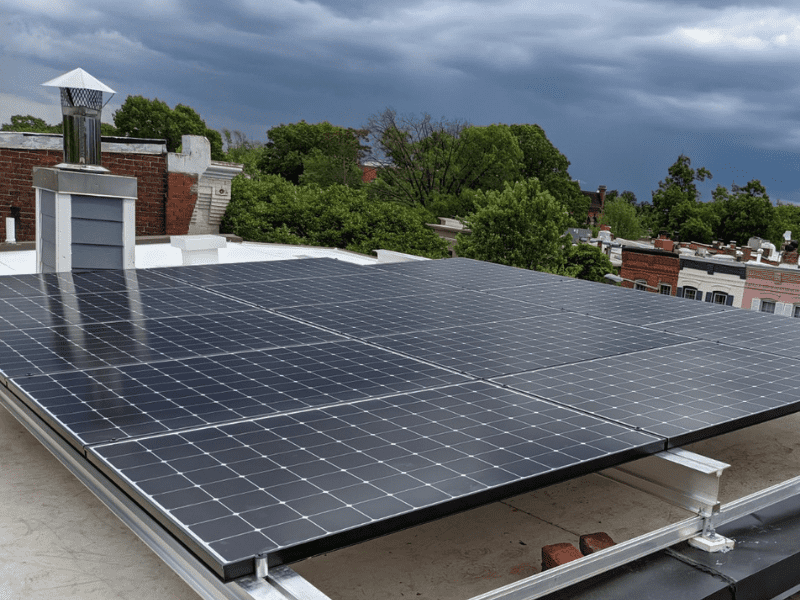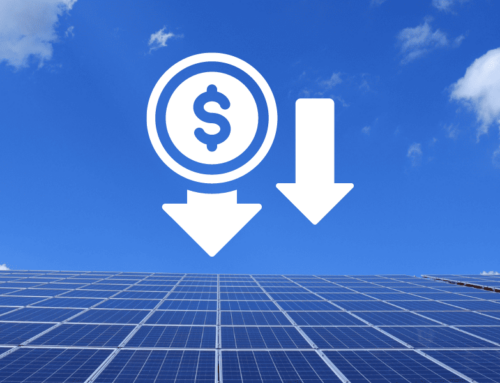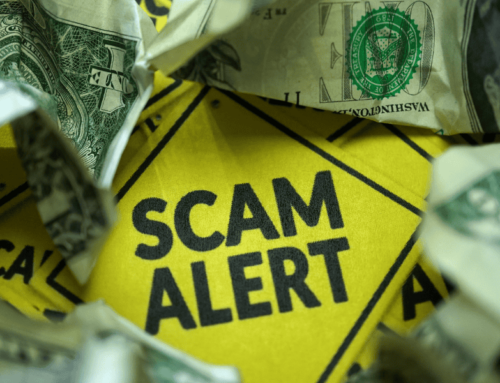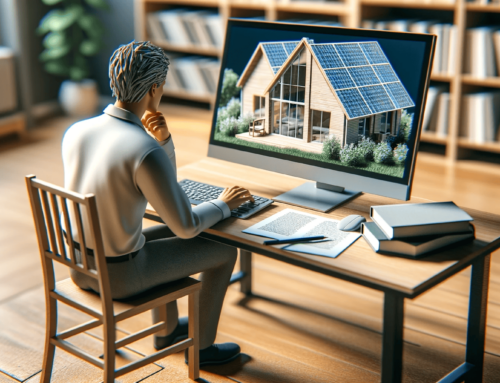First, before understanding the benefits of the bill, it is important to understand that the solar market in DC is unique, having made a deep investment in building a sustainable, democratic, clean energy that prioritizes benefits to local residents.
We are the only city in the world that is determined to fund reducing all energy bills for low-income households by at least 50% by using locally produced solar. Representatives from cities around the world are visiting DC to study our efforts and to replicate this visionary idea of energy democracy and equity followed by decarbonization. Not equity as an afterthought. This extremely challenging program with climate change and equity at its core deserves our attention, patience, and support. Because it is funded by the delta between filled and unfilled SREC carveout, it would fail if the SREC market were allowed to collapse. It is dependent on a strong SREC market to bring in outside money to finance the community solar projects it relies on.
Second, DC is the only city in the United States that has an unlimited community solar market, meaning that anyone in DC can benefit from rooftop solar by building, sharing, or subscribing to a locally installed community solar array. Highly democratic, equitable, and potentially transformative, this means everyone in DC can have access to solar to lower their bills, reduce their carbon footprint, and control their own energy destiny, at the same time creating local jobs. Elsewhere in the U.S., community solar is not legally allowed or is constrained and tightly controlled by the utility.
At this early stage, there are many challenges, including finding the right spaces, Exelon interconnections, and credit allocations. A strong SREC market is critical to the achievement of the vision. With added Inflation Reduction Act (IRA) incentives, we may be at a critical threshold of impact and penetration.
DC has the potential to be a transformative model for the world through its:
- Robust solar program
- Modernizing the Energy Delivery System for Increased Sustainability (MEDSIS) grid of the future process
- Sustainable Energy Utility (SEU),
- Support of energy efficiency, and
- Aggressive electrification work.
In DC, local benefits drive and motivate decarbonization as well as energy democracy, rather than consumers footing the bill for expensive upgrades and power purchases with only Exelon shareholders benefitting.
Instead of Pepco building substations in our communities, we envision distributed solar and storage managing the grid needs. In 2021, the DC Public Service Commission Order #20286 directed Pepco to move forward with a planning process “to identify opportunities to defer large-scale utility investments, such as new substations and other large equipment upgrades, and enhance the opportunities for third parties to provide services to the electric distribution grid serving the District of Columbia.” While there is a long way to go to achieve this alternative vision, it is important to see the full context as a way to evaluate the benefits of the DC Solar Program. It is the backbone of this transformation. The potential is remarkable, but we are at the initial steps in building a truly equitable, democratic, and sustainable decarbonized energy system for DC.
What are the benefits of more local solar?
- Lower energy bills for more DC residents
- SRECs fund solar with no up-front costs via Power Purchase Agreements (PPAs) for many low- & moderate-income residents
- Solar, with a strong SREC market, provides savings for churches, schools, and community organizations all across DC and may help finance roof replacements or other needed building repairs.
- Because of DCs Community Solar Program, anyone in DC has access to solar savings (supported by DC SRECs), including people living in apartments and renters.
Groups like National Housing Trust are developing dozens of projects for affordable housing because of the SREC values, lowering energy bills for thousands of low- and moderate-income families.
Installing solar in low-income communities is possible because of a strong SREC market that allows system construction to be financed by outside capital providers without the need for significant up-front investment from customers. This has made solar accessible for thousands of low-income residents, churches, and small business owners in the District—without a strong SREC market, only higher-income residents and businesses will be able to access the benefits of solar energy.
DC will see even more investment in low-income and historically underserved communities if it raises the current carve-out due to new federal incentives for building solar in low-income and low-employment areas in the federal IRA.
While many of these projects are happening even outside of the Solar for All program, it has a goal of lowering electric bills by at least 50% for 100,000 low- and moderate-income households by 2032. The more robust the SREC market, the more of these installations of rooftop and community solar can be completed at a lower program cost. The District’s strong SREC market is the backbone of this nationally recognized innovative program.
Economic development and infrastructure investment of around $500 million have been invested into DC from the local solar carve to date, with an estimated $1.5 billion more being invested to reach the 10% local solar goal. Expansion of the local solar goal to 15% would bring in additional investments of more than $1 billion. This money is recirculated in the DC economy, creating a profound multiplier effect.
Local Jobs
Local solar companies currently employ more than 1000 workers. These companies project that number will double by 2030 and re-double by 2041. To support that growth, DC offers a robust solar job training program with 50-100 residents completing it each year.
Energy Democracy
We have a goal to support more individual, local, and distributed control over where our energy comes from in DC.
Resiliency
More reliance on local energy increases both climate and economic resiliency, as it lowers dependence on energy sources outside of our region that is subject to price volatility and fuel shortages.
Local solar, when paired with storage, whether in the form of an electric vehicle (EV), a home energy storage system, or other small-scale storage in a microgrid, can provide ongoing power in an outage.
Gateway for Electrification and Net-zero Buildings
Homeowners and building owners are being asked to electrify their homes and cars to get to net zero, using largely their own resources. Going solar is a critical first step for most households to undertake these major new investments as it reduces their costs to do so. People need control over their energy costs if they are going to join the “all-electric” movement.
Grid Services
The DC Public Service Commission MEDSIS proceedings are actively exploring and investing in new ways for solar and storage to contribute to ratepayer savings. They are currently issuing a $2 million Request for Proposal (RFP) to establish a pilot project to use distributed solar plus storage for peak shaving to bring significant cost saving to ALL DC ratepayers. Lowered peak demand reduces the need for expensive peak power, especially when paired with storage. A robust solar/SREC market may be the difference between this work succeeding or failing.
Demand Shifting
In general, electricity costs much more during the day than at night. Solar provides energy to our local grid when it is expensive, and solar producers use grid energy at night when it is less expensive.
Lower overall demand reduces wear and tear on the grid, lessening the need for upgrades and lowering costs for everyone. For example, lower demand reduces the need for new substations, which has added benefits for land use other than electric grid infrastructure.
Lower grid congestion also reduces the need to import power, lowers congestion on transmission lines coming into DC, lowers congestion fees that utilities pay, and reduces the stress on the broader grid, as well. Currently, DC’s grid is considered highly congested, requiring the city to pay a multi-million-dollar congestion payment to PJM. As DC produces more energy and reduces load, that payment will decrease.
Greenhouse Gas (GHG) Reductions
Local solar is replacing the PJM (regional grid) fuel mix that is over 60% coal and gas at the ratio of 1 kWh of solar in DC, replacing > 0.6 kWh of fossil fuel resources.
The local solar Renewable Energy Portfolio (RPS) drives nearly every solar system that is built in the District. Each SREC produced is 100% additional renewable energy that would not have existed otherwise. Increasing the local solar RPS by 5% yields 5% more renewable energy on the grid that would not exist otherwise.
Our regional grid has a serious interconnection backlog, and Federal Energy Regulatory Commission recently approved a plan to not consider new applications for interconnection of renewable energy facilities until 2026. This is problematic — waiting four years to make progress toward our climate goals is counterproductive. Distributed-scale rooftop solar systems are the best way to make progress right now.
Downsides to Getting Renewable Energy Outside of DC Area
If we acquire our needed energy from renewable sources outside of the District, we fall short of our overall goals:
-
- We reap few jobs or economic benefits for DC from these purchases — all the payments leave the District.
- Fewer benefits going DC residents lead to less support for clean energy, climate programs, and policies.
- Renewable projects outside of DC are more likely to be large projects on forest land or agricultural land that have a higher environmental impact than putting panels on existing buildings, brownfields, or parking lots in DC.
- Reduced climate benefits. Distributed-level solar is more efficient and has less line loss, so it offsets more Greenhouse Gases per kWh production. Further, each SREC purchased by suppliers to meet the local solar RPS carve out represents 100% additional GHG reductions, whereas the out-of-state Tier 1 RECs that are purchased to satisfy the rest of our RPS do not.
The bottom line is that we have started in the right direction to reach our energy goals. But there will be many challenges along the way. Understanding the process and keeping up with energy plans will help all DC residents aid the fight against climate change and to become the most energy-wise city in the world.
To learn more, check back with us often at https://districtenergyllc.com.

